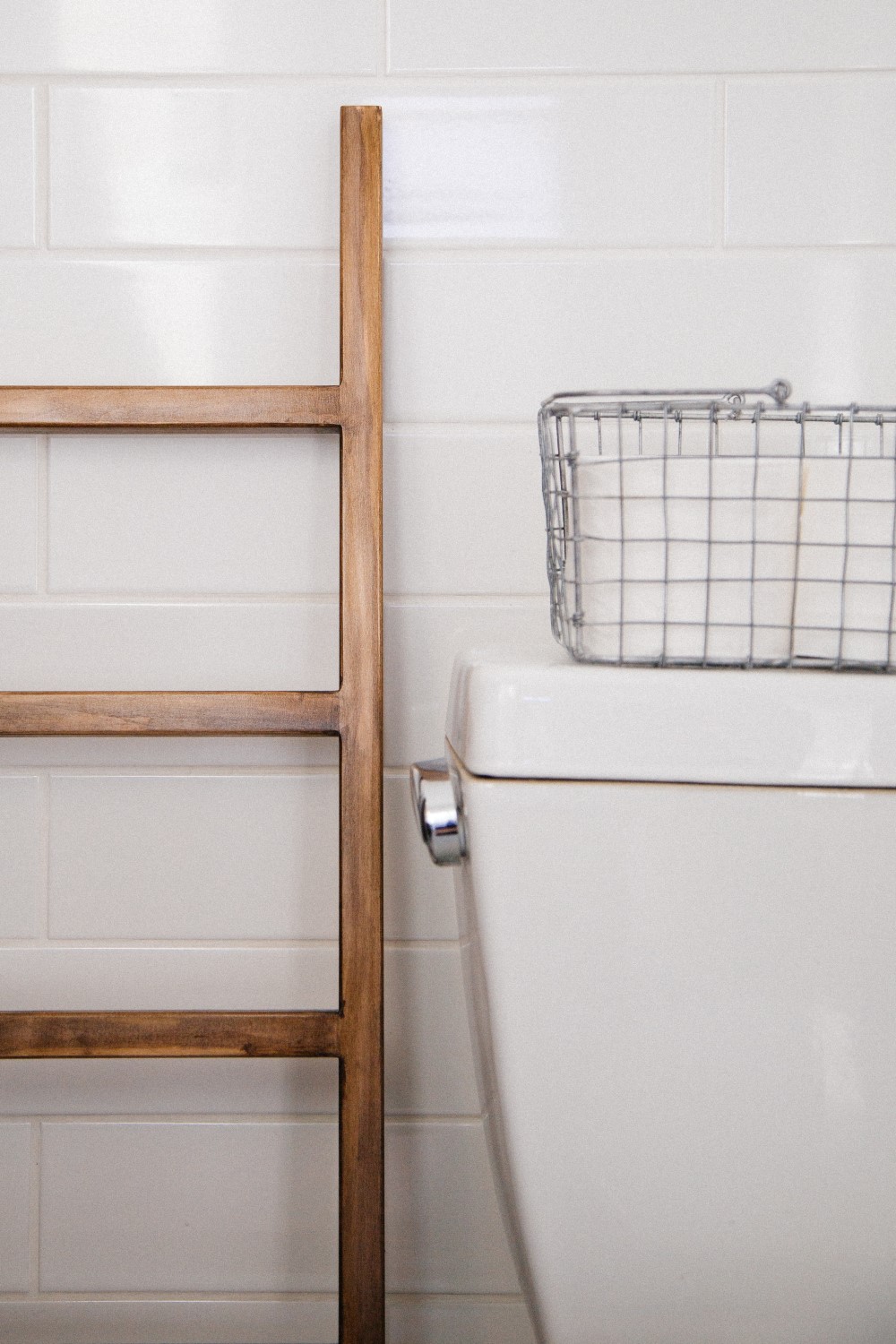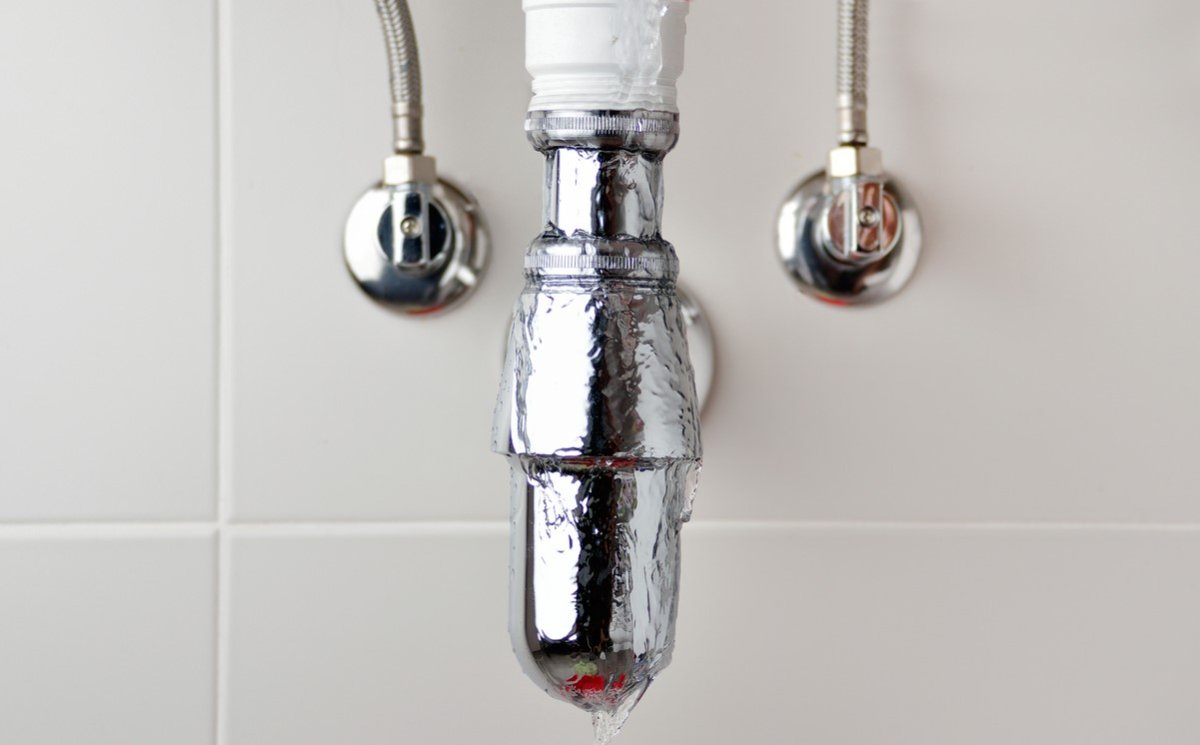We may earn revenue from the products available on this page and participate in affiliate programs. Learn More ›
This content has been brought you by SupplyHouse. Its facts and opinions are those of BobVila.com.
Q: This is our first summer in our new house, and suddenly it seems like all the bathroom plumbing is sweating. I have to put a towel beneath the toilet to keep water from puddling on the bathroom floor, and I’m constantly wiping up water drips from the bottom of the sink cabinet. What’s causing this? Could the moisture damage our home?
A: First, your pipes and your toilet aren’t sweating in the traditional sense. Instead, condensation forms on these surfaces as warm, humid air makes contact with the pipes and the toilet tank, which are both cooler because they’re filled with cold water—just as droplets form on the outside of a glass of iced tea on a hot summer day. And yes, that pooling of water can over time damage surfaces around your pipes and toilet tank, and it can also increase the risk of mold and mildew getting a foothold. Fortunately, we have a few solutions to nip the problem in the bud, courtesy of Daniel O’Brian, technical expert for leading plumbing retailer SupplyHouse.com.
It’s all about the dew point.
The dew point is the temperature air needs to be cooled to in order for it to release water vapor, and the dew point changes with the humidity level. The higher the humidity, the higher the dew point. “Condensation occurs once the temperature has been lowered below the dew point,” O’Brian explains. When air cools on contact with chilled surfaces (your water pipes and toilet tanks), it releases water vapor in the form of those droplets. You’re more likely to notice this condensation on pipes and tanks during the summer, which tends to be more humid and therefore has a higher dew point than other times of the year.
Over time, accumulated drips can cause damage.
A little bit of water here and there won’t cause problems as long as it dries—or you dry it—quickly. When humidity is high, the condensation that forms on water pipes and toilet tanks can be substantial enough to puddle on floors and inside cabinets, where it may “damage building materials, such as tile and subflooring, by leaving stains or even impacting structural integrity,” O’Brian says. Even worse, that dampness in a dark, closed space, such as under a sink, creates the perfect environment for mold and mildew to grow.

Add insulation to prevent hot, humid air from making contact with cold pipes.
One of the easiest ways to keep water supply pipes from sweating is to cover them with pipe insulation. K-Flex Wall Insul-Lock Pipe Insulation (available from SupplyHouse) features a slit along the length of the tube that makes it simple to slip over your water supply pipes. The factory-applied adhesive at the seam activates when you close it, leaving you with an effective barrier to prevent humid air from reaching the cold pipes in the first place.
Increase the water temperature to decrease condensation.
No one really wants to sit down on a hot toilet or to waste hot water on one. Raising the temperature of the water in your toilet tank a few degrees, though, is enough to make the surface slightly warmer than the dew point so no condensation occurs. “Here’s where an anti-sweat valve comes into play,” O’Brian says. A water-mixing anti-sweat valve, such as Raven’s Brass Anti-Sweat Valve (available from SupplyHouse), connects to both the hot and cold water supply lines so it can introduce hot water into the cold line when needed. The amount of hot water can be adjusted to prevent toilet tank sweating while using as little hot water as possible. This valve is a real problem-solver at the water line to the toilet, but it’s also useful underneath a vanity sink.

Reduce bathroom humidity and prevent toilet tank sweating by installing a ventilation fan.
The humidity created by your steamy showers doesn’t help the situation; it only increases the dew point. “Installing a ventilation fan will help remove the moisture in the air,” O’Brian says. “With less moisture in the air, there is less that can accumulate on cool surfaces.” Be sure to measure your bathroom and choose a quality bathroom exhaust fan that’s appropriately sized for the space. The Broan Ultra Silent Ventilation Fan with Light and Nightlight (available from SupplyHouse), for example, is rated at 150 CFM (cubic feet per minute, a measurement of how much air the fan moves) and will quickly remove the steam—and keep the toilet tank drier—in a bathroom of about 150 square feet, or slightly smaller if your ceilings are 10 feet or taller.
Whole-house dehumidifying offers long-term solutions.
In summer, your air conditioner removes a percentage of humidity in your home as it cools the air, but if you live in an especially humid region, it may not remove enough to prevent condensation on pipes. Here, a whole-house dehumidifier can supplement your air conditioner’s work. “A dehumidifier will reduce the amount of moisture in the air, lowering the relative humidity in the home,” O’Brian says. As a result, you’ll see less unwanted condensation and enjoy a higher comfort level. Note that a whole-house dehumidifier, such as the Honeywell 3000 Series Whole House Dehumidifier (available from SupplyHouse), attaches to the home’s HVAC system and should be professionally installed.
Replacing humidity that originates inside the home with drier outdoor air may also alleviate condensation problems.
While most condensation problems occur as a result of regional humidity, some humidity can filter into the living space from damp basements or crawl spaces. When this happens, O’Brian suggests integrating an energy recovery ventilator (ERV) into your home’s duct system. “An ERV will not only remove heat and moisture from the air but, in exchange, will also bring in fresh, drier air.” Consult an expert here, too. It’s best to leave the installation of a system like the Fantech VER 150 Energy Recovery Ventilator (available from SupplyHouse) to the HVAC professionals.

